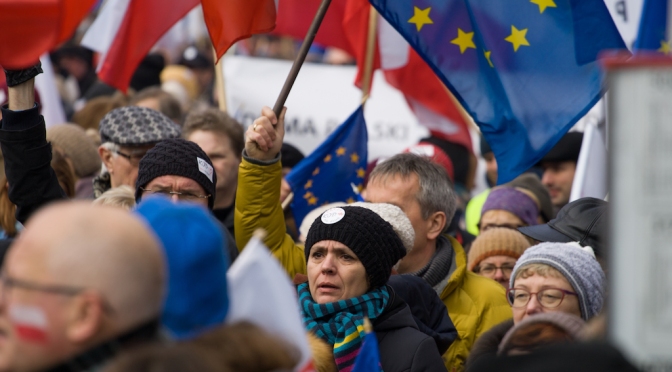 Nicole Rejer is a freshman psychology major.
Nicole Rejer is a freshman psychology major.
This past week, thousands of Polish pro-choice supporters gathered outside parliament with wire coat hangers in Warsaw to protest Poland’s ruling party. The right-wing conservative party, Law and Justice (also known as PiS) is supporting Catholic Bishops in their call for a full ban on pregnancy terminations. Currently, only several hundred abortions are performed every year in Poland. Poland has some of the most restrictive abortion laws in Europe. However, this doesn’t stop thousands of underground abortions from happening, according to pro-choice campaigners.
I grew up in a Polish Catholic household–very conservative, and I do understand why the government is bending to what the bishops want. First, in a country as religious as Poland, it is very hard to separate religion from politics. Almost 90% of Poles identify as Catholic (the rest are still most likely religious), and when politicians are elected, their religious lives play a huge part in how the public receives them. Furthermore, as Catholicism tends to hold more conservative positions, the Catholics of Poland often gravitate towards conservative political parties: right now, the ruling party in Poland is PiS, a conservative group which isn’t so keen on changing anything or pleasing the liberals.
Growing up as a person of Polish descent, I identified as a Catholic more than anything, and because of that, the issue of abortion becomes very complex. The same goes for a majority of Polish citizens today. As Catholic doctrine states, human life is sacred from conception to death: in scientific terms, there is a living human being inside the womb from the moment the sperm enters the egg. So it would be nothing short of murder to destroy that child, under any circumstances. That’s why in Poland abortions are only allowed if the mother’s health or life is endangered by the pregnancy, the fetus is seriously malformed, or if the pregnancy was the result of a criminal act, such as rape or incest. In an abortion poll from CBOS Public Opinion Research Center in 2014, 69% of Poles viewed abortion as immoral and unacceptable.
I have to admit that in some cases, I am one of those people who view abortion as immoral. Obviously, there is always an exception to the rule, and there are some cases in which an abortion just makes sense and is the best option for all parties involved. However, this doesn’t change the fact that the mother is choosing to end the life of her baby: and for me, as a Catholic, that’s simply not right.
Still, this doesn’t mean that other people do not have the right to perform an abortion if that is their choice. Just because I (or other politicians for that matter) don’t agree with the practice, doesn’t mean it is justified to prohibit it from every woman in one country. Poland’s government needs to make a greater effort at separating public law and government from religious practice, as Poland is not a theocracy, but a democracy. Most of the politicians may be of the Catholic faith, but the entire country isn’t. Every woman has the right to decide what happens to her body, and the government should not pose such strict regulations (especially if the decisions are being influenced by conservative Bishops). Completely prohibiting abortions will simply make people angrier and cause a huge increase in underground abortions, which are much more dangerous.
I cannot say that I have a definitive answer to this complex issue. But I do know I believe in two things: a fetus is a child, and a woman holds the ultimate decision in what happens to her body and the child growing inside of it. If we ever decide how to reconcile these two sides, it won’t be through government pressure, but only by taking into account personal stories, statistics, and considering what is best for all individuals involved.
Photo courtesy of JAAP ARRIENS/FLICKRA

